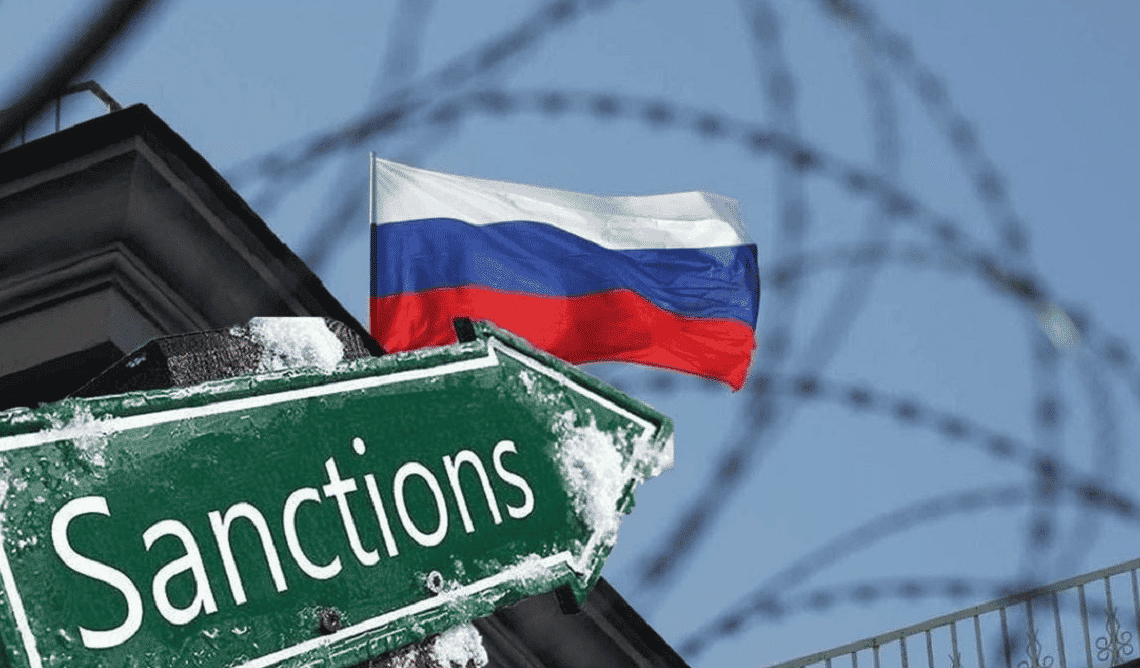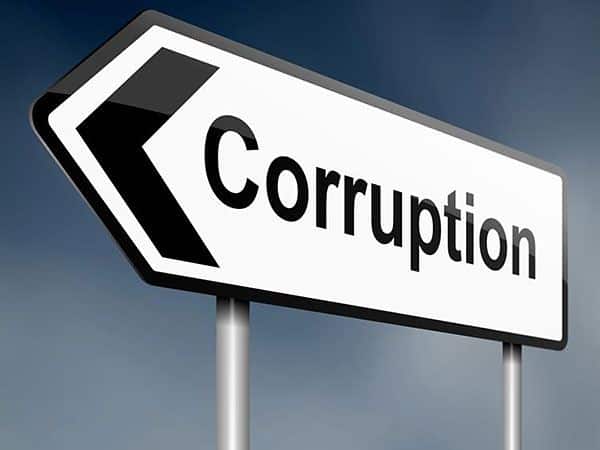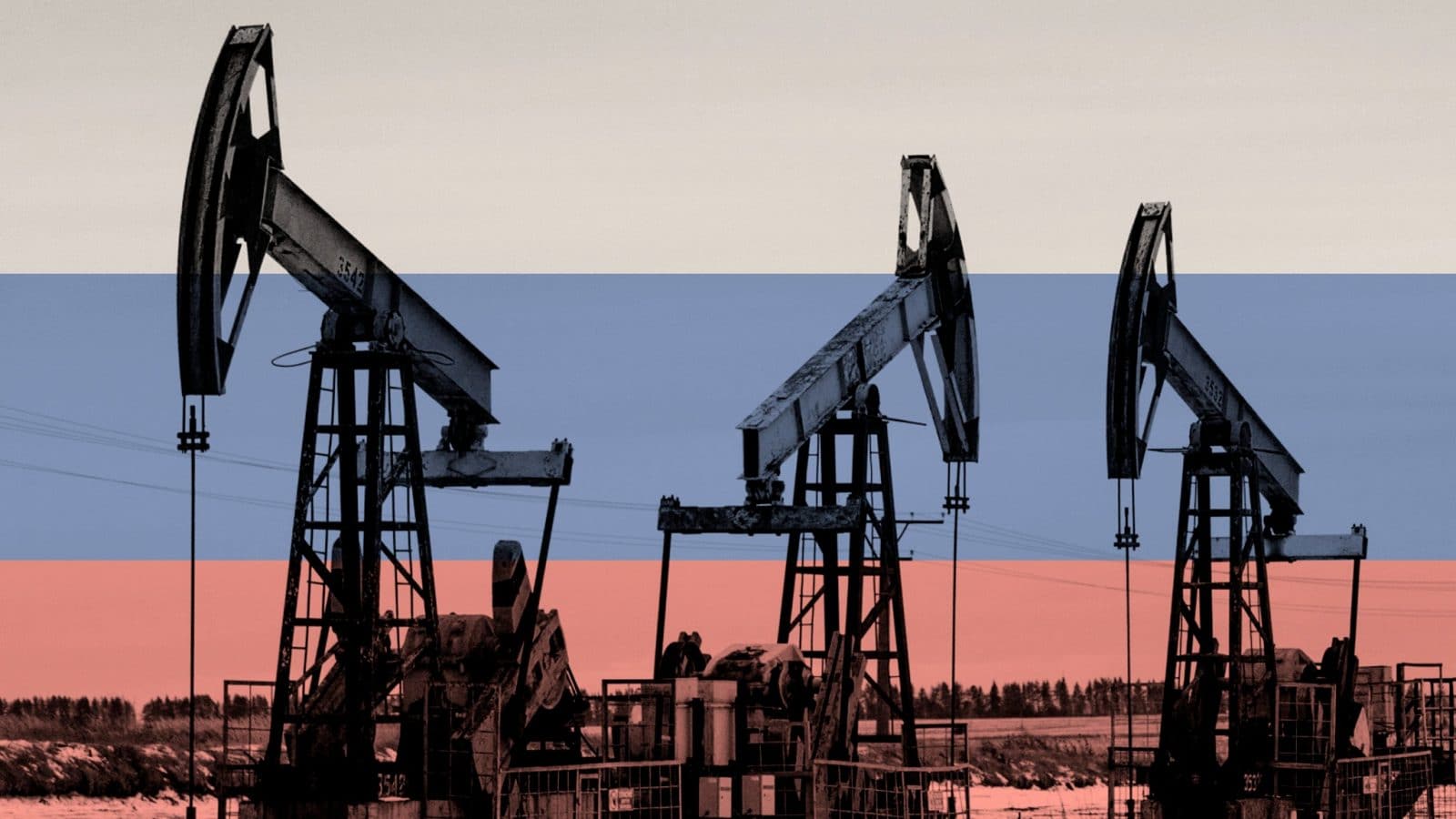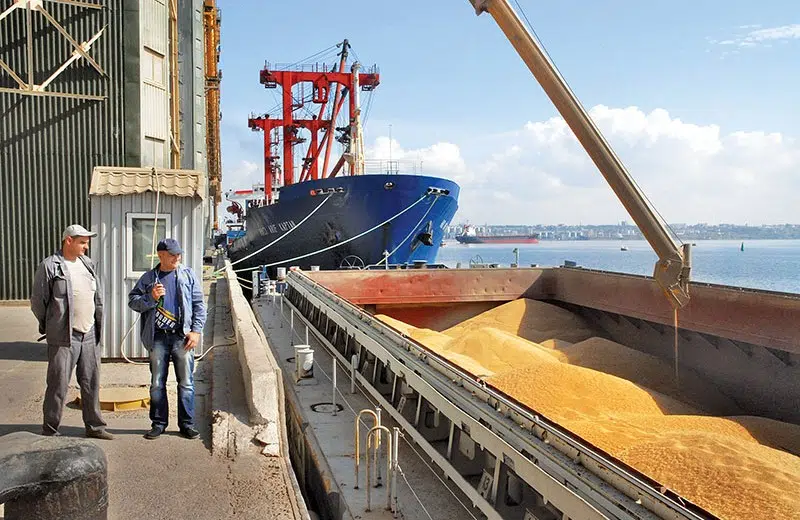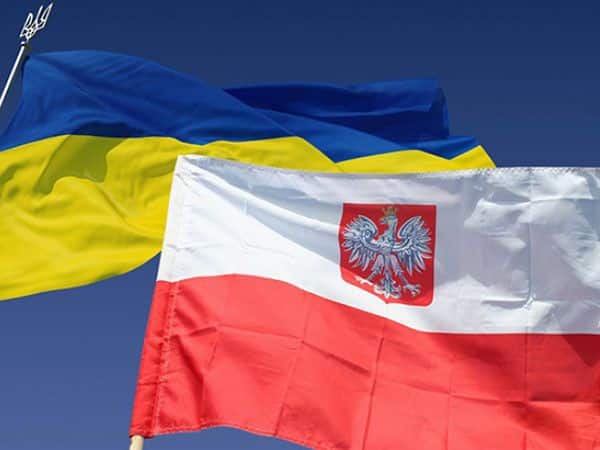Table of Contents
- The Russian economy is rapidly declining, and the ruble is one of the weakest currencies. Why is this not enough?
- How Russia manipulates data and fabricated figures
- Russia’s economy plunging into the abyss
- The cost of war for Russia and whether China will save it
- How Russia evades sanctions and how the West can stop it
“No Money, No War!” — This is one of the postulates of history. That’s why, in the early days of the full-scale invasion, an entirely appropriate response from the West was an attempt to cut off the sources of funding for Putin’s regime. Sanctions were meant to be a “bag over the head” of the Russian economy. But whether Russia’s oxygen was completely cut off or not — read about it in the material from 24 Kanal.
The sanctions were supposed to weaken the Russian economy to the point where waging war would become difficult or even impossible. Additional arguments were meant to be the active assistance to Ukraine with modern weapons and defense technologies against Russian missiles.
The Russian economy is rapidly declining, and the ruble is one of the weakest currencies. Why is this not enough?
In the short term, the war has already led to a significant increase in energy prices — a natural market reaction.
According to some data, up to 60% of Russia’s income was derived from hydrocarbons, this allowed Moscow to earn quite well in the first half of 2022. The sanctions had not yet taken effect, and Western companies and governments were “stockpiling” energy resources in advance, primarily oil and gas.
After a certain period of time, hydrocarbon prices dropped by several tens of percent. Sanctions began to take effect, selling oil and gas on external markets became increasingly difficult, and Europe (excluding Hungary) practically completely rejected Russian gas and oil.
In addition to the loss of major revenue sources, a drain of hundreds of thousands of skilled and educated workers started from Russia. Later on, the national currency’s exchange rate plummeted to 100 rubles per US dollar.
All of this has already happened to Russia and its economy. But why has all of this proven insufficient to quickly drive Russian troops out of Ukrainian land? Russia continues to attack Ukraine, driven by a maniac who has decided to destroy Ukraine.
Russian economic analyst Mikhail Krutikhin predicted that Russia would lose up to 57% of its income from energy exports in 2023. And this prediction has almost come true — from January to April 2023, the Russian economy received 52% less income than during the same period the previous year. The drop in budget revenues led to a significant budget deficit — in January 2023, it reached nearly 25 billion dollars, accounting for about 60% of the entire annual plan.
Over the next 2 months, this deficit continued to grow, reaching its peak at around $45 billion by the end of April 2023 (117% of the annual plan!). However, in May, the Russian Ministry of Economic Development reported a “surplus” and the figure decreased to $42 billion. As of August 2023, the budget deficit has already been “exceeded,” hovering around $45 billion, and the Russian ruble on the exchange market crossed the “psychological threshold” of 100 rubles per dollar.
However, the Russian Ministry of Finance along with their central bank are taking urgent measures to curb the fall of the national currency exchange rate by raising the key interest rate and limiting imports. According to the officials, “the ruble exchange rate is not as important as inflation containment.”
But this is an irreversible process, and taming inflation will still prove difficult, as the Russian economy remains highly “import-dependent,” and Russians haven’t learned to manufacture the majority of goods and even food products.
How Russia manipulates data and fabricated figures
However, propagandists are not deterred by this, which is why the relevant ministry recently even made a prediction of a 1.2% growth in the Russian economy for 2023. Considering that the country is at war with half of the Western world, this is quite a clever trick for the domestic audience.
However, it’s important not to forget that macroeconomic indicators in Russia cannot serve as objective sources of data. They are nothing more than another tool of Kremlin propaganda and the ruling machine.
Federal State Statistics Service (Rosstat) has repeatedly been noted for its “creative statistics,” and to achieve the desired result, it often changes the methodology it uses to determine indicators. Such data in the long term are impossible to compare or form trends with due to their utilization.
A good example here can be the “poverty rate” in Russia: according to official data, the number of underprivileged individuals decreased by 1.7 million in 2022 (in figures, this is a new record-low figure). But don’t rush to be surprised and try to explain the paradox! It’s all because Rosstat once again changed the methodology for calculating the indicator: now, only those who are worse off than their neighbors in the region are considered poor.
See also: Sanctions loophole. Almost all sanctioned goods worth billions of dollars make their way into Russia
In other words, if all the neighbors are eating cabbage or cabbage water, only those who have only water will be considered poor. The Insider conducted its own calculations and concluded that the number of underprivileged individuals did not decrease by 1.7 million, but on the contrary, increased by 2.3 million people!
One in three Russians now “works only for the toilet,” meaning they have just enough money for food. And every tenth person doesn’t even have enough for that. In reality, around 20 million people in Russia are living below the poverty line, nearly 1.5 times more than official statistics show. This is yet another proof that alongside television and other media in Russia, Rosstat is nothing more than a propagandistic tool aimed at conveying the following message: “The war affects our economy, but we are strong and we will cope with everything!”
Russia’s economy plunging into the abyss
The true state of Russia’s finances is known only to those especially close to Putin. However, there are all grounds to assume that the Russian economy is in a state of free fall:
- Thanks to sanctions, the main sources of filling the Russian budget have been effectively blocked,
- Selling hydrocarbons to China and India at reduced prices cannot compensate for immense losses,
- The sale of grain (another significant source of export revenue) has also significantly declined.
But there are a few more points.
During a short-lived turmoil orchestrated by Prigozhin, the Russian ruble once again fell, marking another downward leap reminiscent of the drop following the start of the full-scale invasion. Currently, the ruble is in its worst state throughout its recent history and has become one of the weakest currencies in the world.
Furthermore, Russia is seeing an exodus of its best-educated and skilled workers (according to Moscow Times, in 2022, 1.3 million such individuals left Russia).
This fact, along with both voluntary and forced mobilization, has led to a significant labor market deficit — there are now two vacancies for every worker. Goldman Sachs considers this to be perhaps the most significant problem for the Russian economy.
Income from yet another export sector — arms sales — has also decreased. According to certain data, the decline in this sector was nearly fivefold, dropping from 50 billion in 2021 to around 11 billion in 2022.
The cost of war for Russia and whether China will save it
Putin miscalculated: he so actively “hooked Europe on the energy needle” that he ended up with a single customer for his main hydrocarbon product — the West. However, the West, although not immediately, consolidated and introduced a series of sanctions precisely aimed at this.
“The house of cards collapsed,” and Putin is entering even riskier relations, which this time make his regime highly vulnerable and dependent on this one customer. This has become a “geopolitical cliché,” but Russia is becoming increasingly dependent on China, where exports (compared to pre-war levels) have doubled.
However, for China, Russia is a “small external economic partner,” one of many. Currently, it seems that Beijing is interested in Putin’s regime continuing to exist.
But the situation in the Chinese economy is also far from ideal and continues to deteriorate. And the economic downturn in China will inevitably drag Russia down with it.
In addition to all of this, the “cost of war” must be taken into account. No one knows exactly how much this war costs Putin. Data vary not only due to secrecy but also due to the application of different methodologies. According to the most modest estimates by The Economist, it’s around 55 billion per year.
See also: How the West loses to Russia in energy sanctions
Meanwhile, according to Special Operations Reports, this figure is incredibly underestimated — according to experts, the “cost of war” for Russia amounts to around 900 million per day, which is about 330 billion dollars per year. Their perspective factors not only the actual expenses for destroyed or used equipment and weaponry but also the costs of replacement (i.e., creating substitutes).
All the aforementioned data point to the grim trend for the Russian economy, as Russia regresses by decades, engulfing its economy, national wealth, and the savings of its citizens in the flames of war. In essence, Russia is already depleting the resources of its future to compensate for the costs of the current war. And all this is for the sake of the delusional idea of its dictator.
By choosing his own people, Putin has decided to at least partially compensate for the losses and setbacks of his favored oligarchs: the mass nationalization of assets of Western companies leaving or exiting Russia is taking place at “half price,” according to Financial Times. In this process, a “tenth” of the proceeds from such asset sales is directed to the Russian budget. After this, no Western company will invest in Russia for decades. “Mass privatization 2.0” or “Venezuela 2.0,” where everything best is “distributed to the best friends,” and then “nothing grows, not even grass.”
However, solely relying on economic and financial arguments to restrain Russia is proving inadequate. What else can be done?
How Russia evades sanctions and how the West can stop it
Alongside the increase in military and economic aid to Ukraine and the provision of necessary types of weapons that have been delayed, it’s essential to intensify sanctions and impose secondary sanctions.
These should be directed against countries, companies, and individuals that assist Russia in circumventing sanctions. There are numerous willing actors around the world looking to make easy money.
Organizations analyzing components of Russian weapons captured on the battlefield and remnants of downed missiles in the spring and summer of 2023, when sanctions had long been “working at full capacity,” discovered hundreds of components from countries that supported sanctions against Russia in Russian military equipment and missiles (a total of over a thousand).
This includes semiconductor chips manufactured by American companies or their subsidiaries (in total, over 2/3 of all Western components in weapons). Russia’s assistance in achieving this is primarily coming from China, which, according to the Kyiv School of Economics, accounts for around 70% of vital components for weapons.
In second place is Turkey (a good illustration of Ankara’s “multi-vector policy”). Meanwhile, over the past year, semiconductor imports have “sharply increased” in countries like Kyrgyzstan and the Maldives, which are unlikely candidates for the development of high-tech production.
One should not forget about the manufacturers of these very chips — they are certainly not naive individuals who believed in the emergence of a new “Silicon Valley” somewhere in Kyrgyzstan or the Maldives. Therefore, sanctions should also apply to them. In the past, the same was achieved with the United States by compelling banks to cease “global money laundering” through the implementation of the Know Your Client system, in which the primary monitoring function and responsibility for the cleanliness of financial transactions lies with the banks themselves.
And this direction should become the main priority. The threat of losses from imposed sanctions should be significantly, even exponentially, more pronounced and “costlier” than the immediate gains from circumventing them.
Furthermore, the idea of limiting Russian maritime oil transportation has been under discussion for some time. Despite Russia launching a “shadow fleet,” it still lacks a sufficient number of vessels. As a result, around 60% of the oil is still transported by Greek ships.
The West (including the EU) possesses all the necessary instruments to curb the appetite of Greek oligarchs in their desire to profit from the transportation of Russian oil, possibly even partially compensating for their profit losses. Additionally, it’s worth revisiting the question of the price cap for Russian oil. Currently, the upper limit is set at $60 per barrel, and it’s long overdue to decrease it, at least to $50.
The next direction of sanctions pressure is indicated by The Economist, which mentions that only about $100 billion of Russian oligarchs’ assets have been arrested (frozen) abroad. This amounts to no more than 1/4 of the total sum that can already be subjected to asset freezes. Therefore, we have around $300 billion “in reserve” for the reconstruction of Ukraine.
Undoubtedly, the West is assisting Ukraine in this difficult war. And yes, unquestionably, we are grateful for this assistance! However, Ukrainians simply do not have the time to wait until the Russian economy suffocates with the existing holes in the “sanctions bag” that the West has tied. Putin won’t be able to finance the dreadful war he unleashed.
The West needs to take a few decisive steps if it truly believes in the values it preaches and genuinely wants to help Ukraine, not just in a declarative manner.
Originally posted by Roman Andreyko on 24 Kanal. Translated and edited by the UaPosition – Ukrainian news and analytics website
See also: Russia managed to increase missile production several times despite Western sanctions

